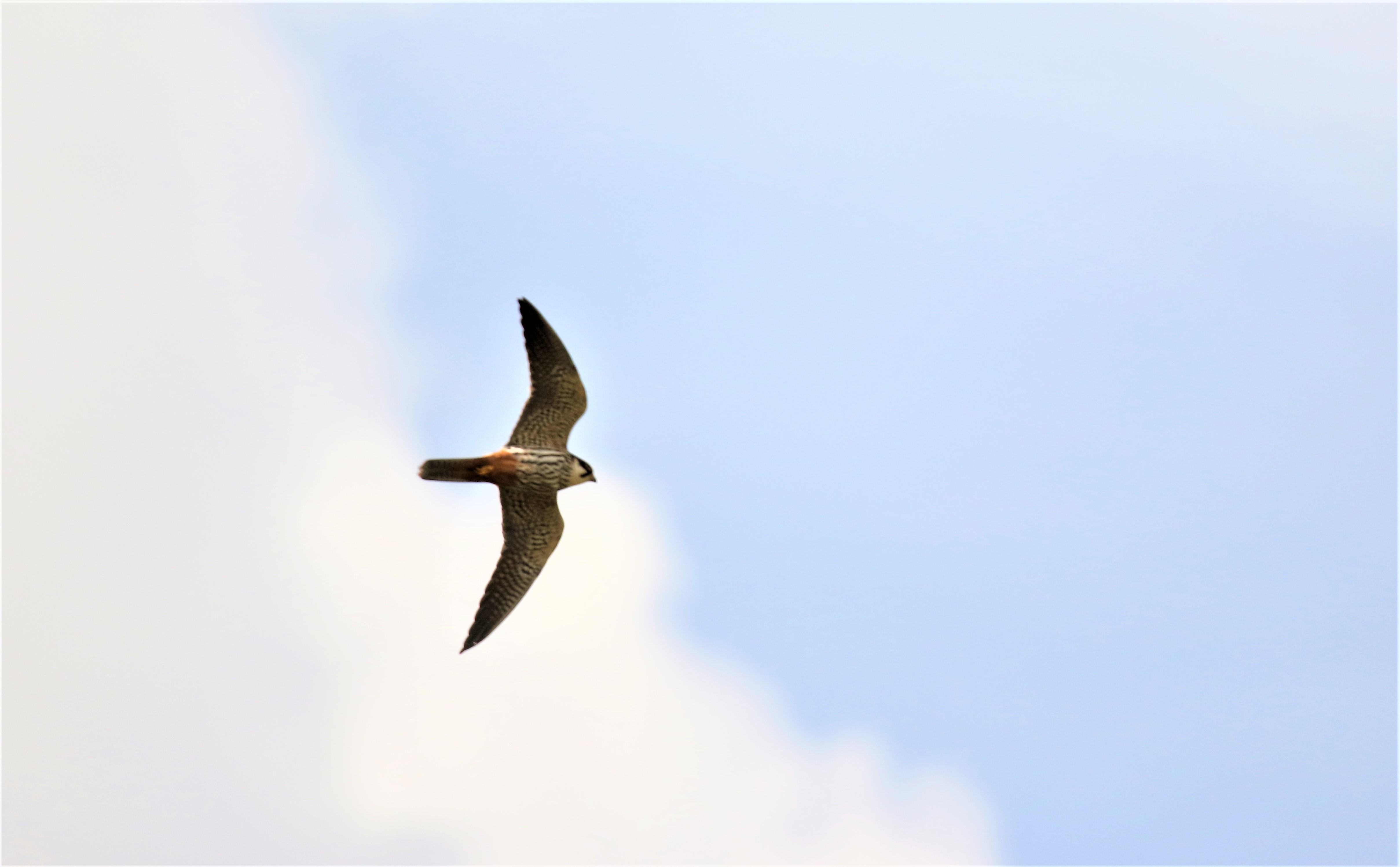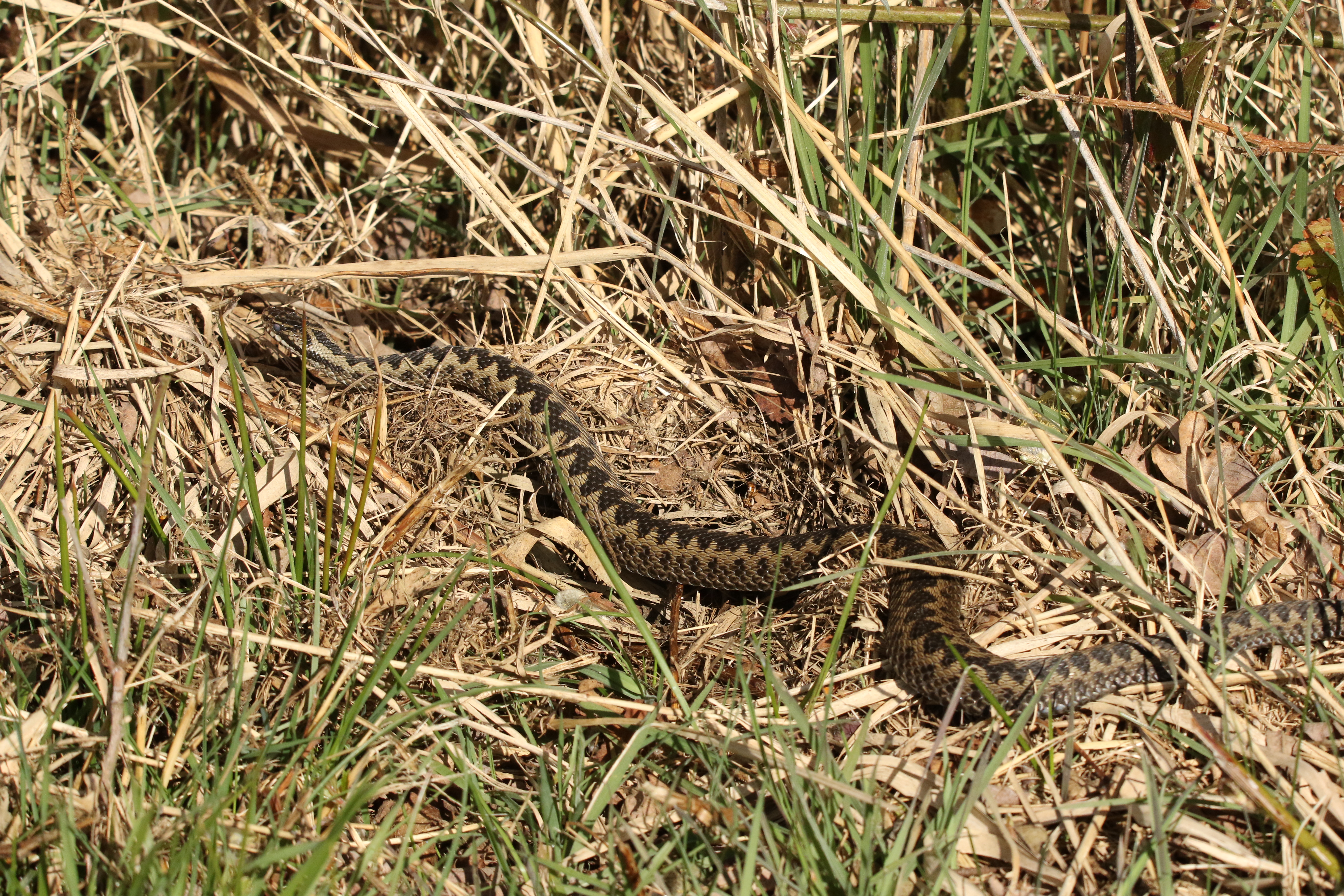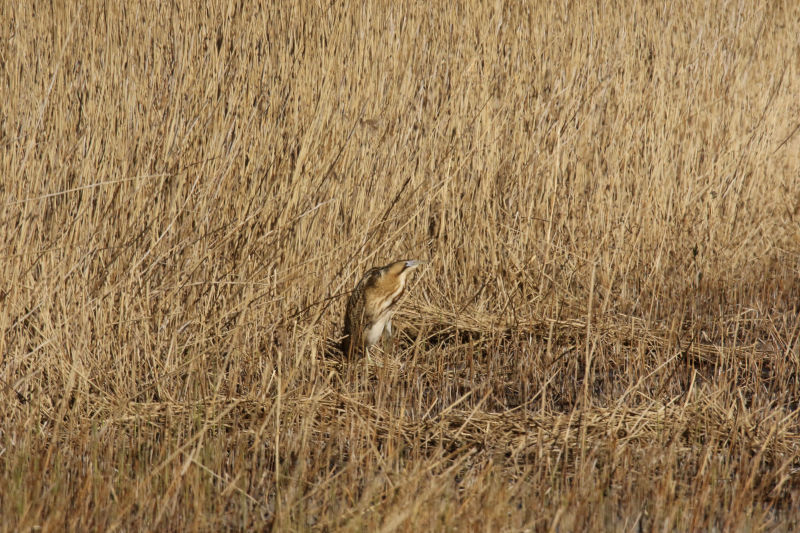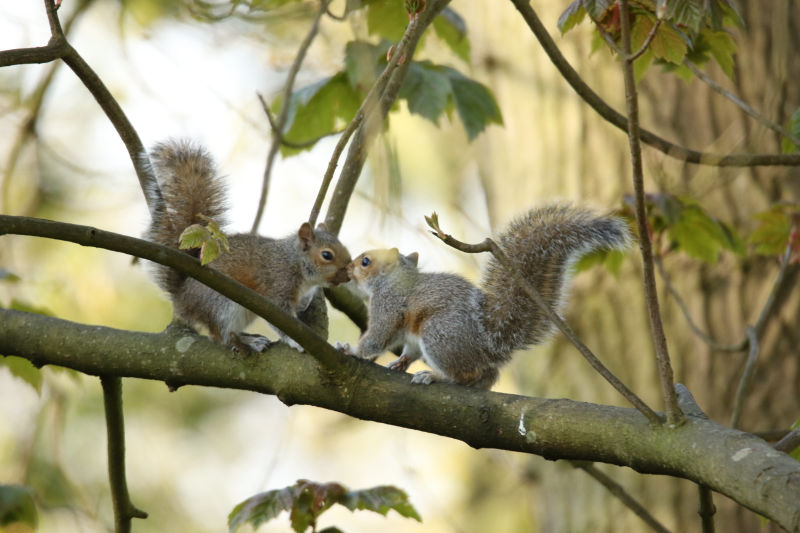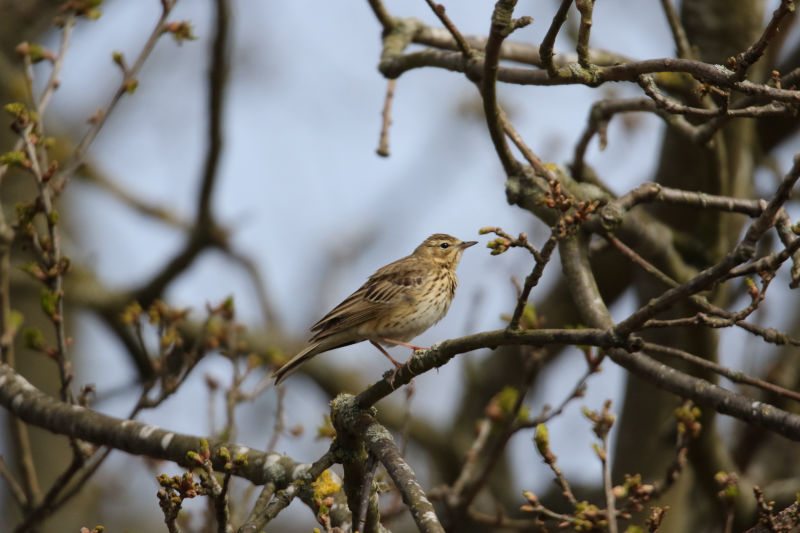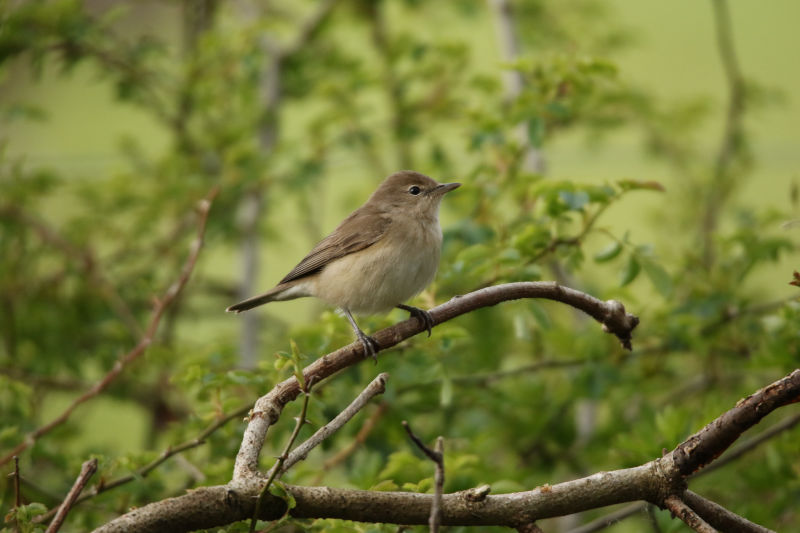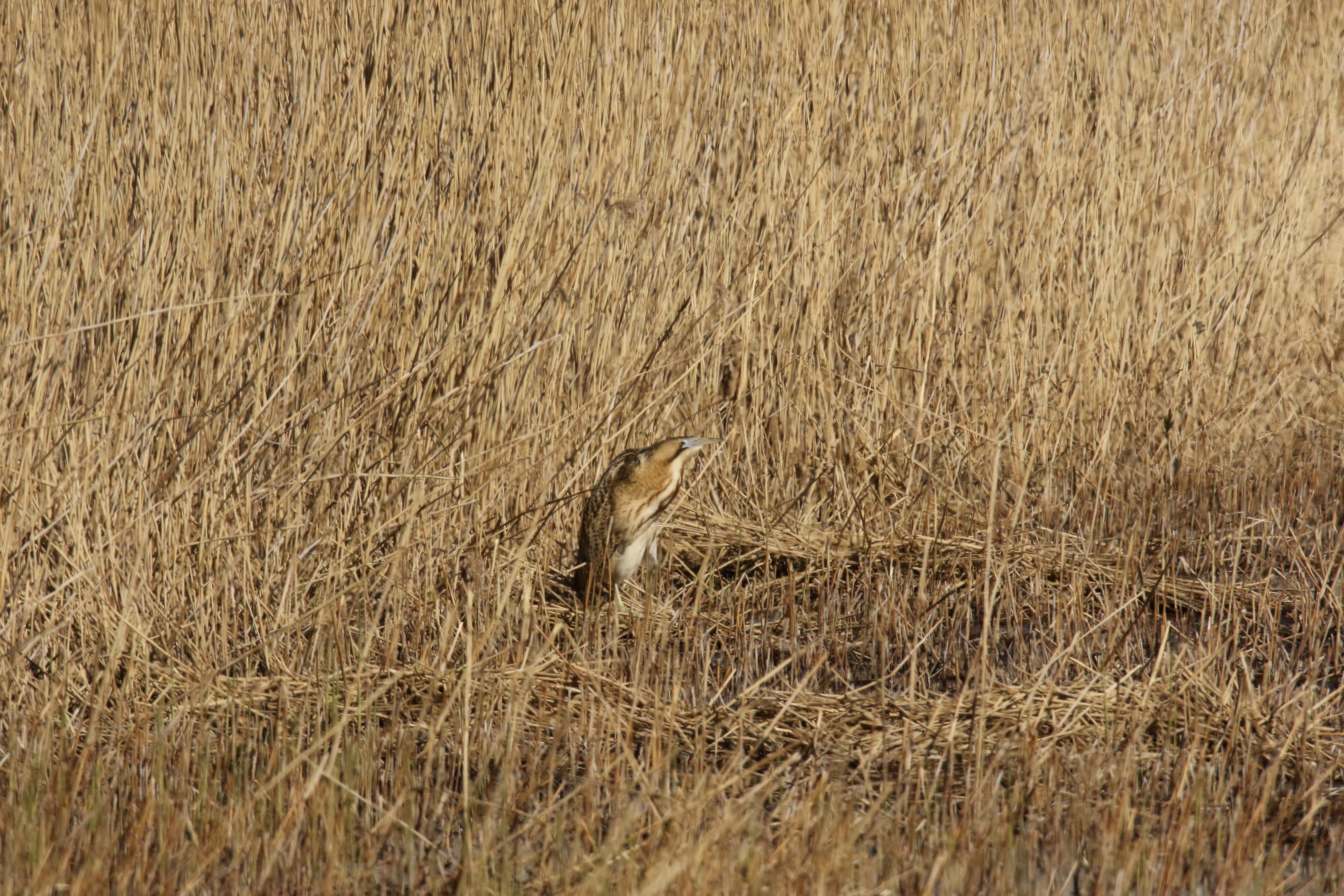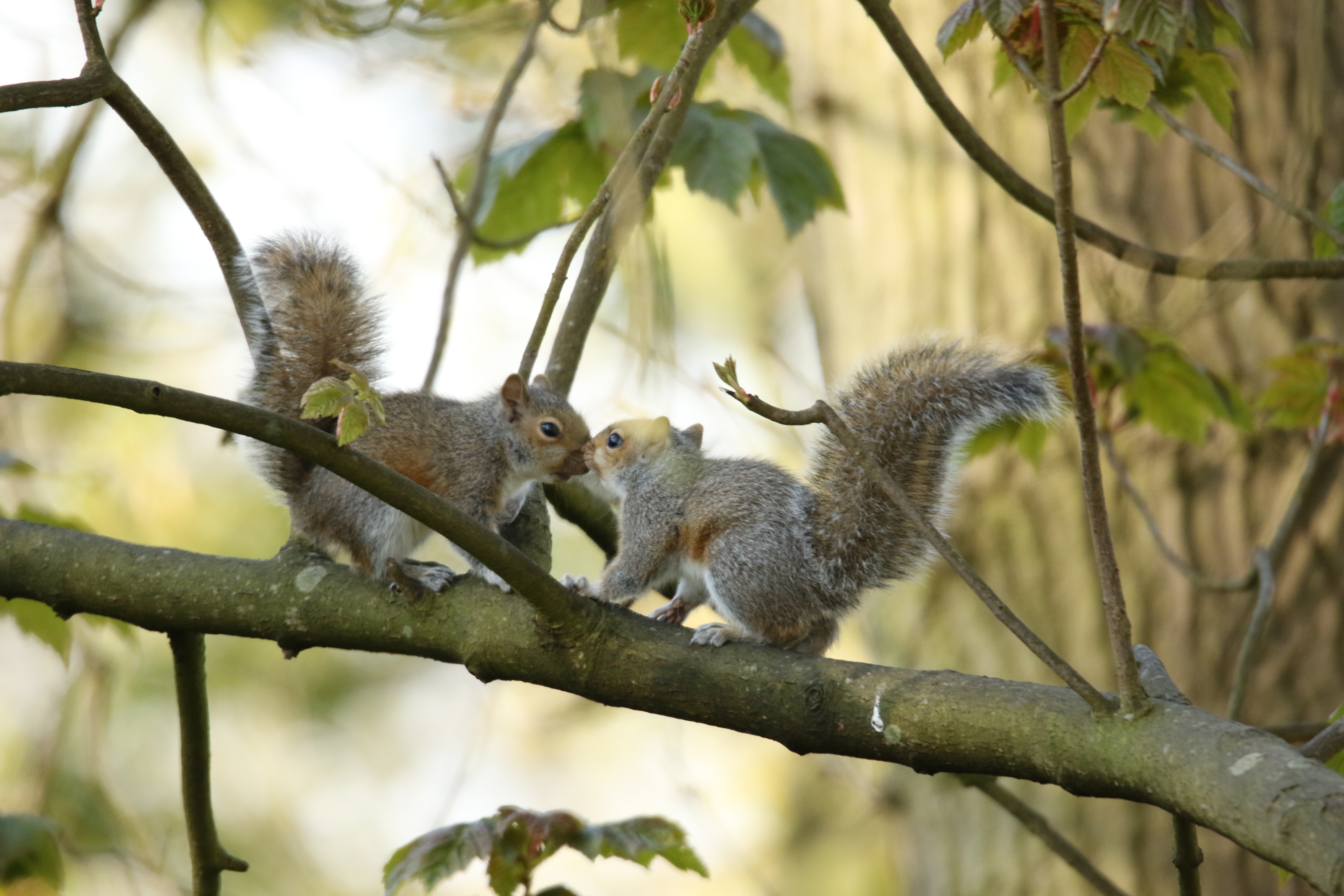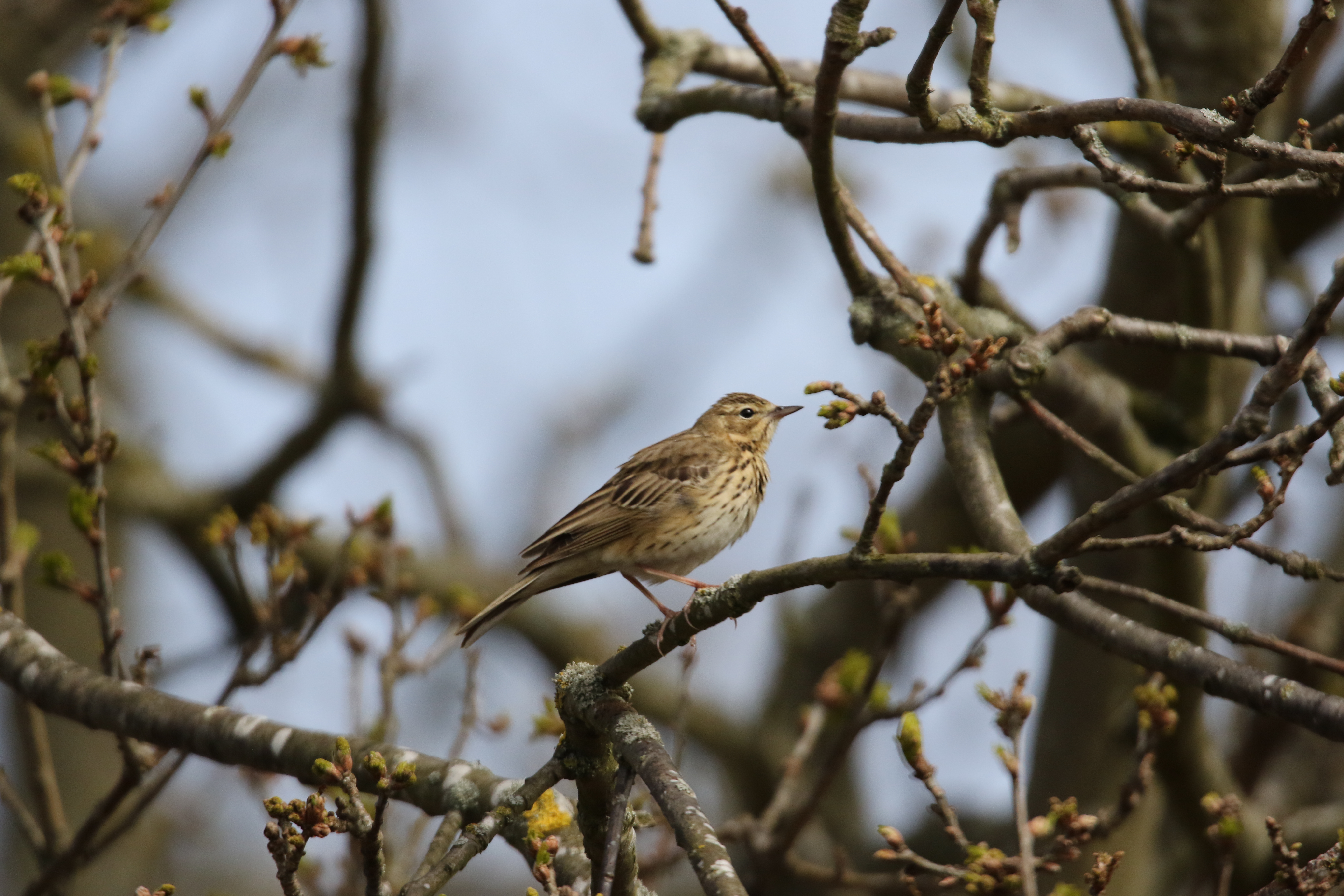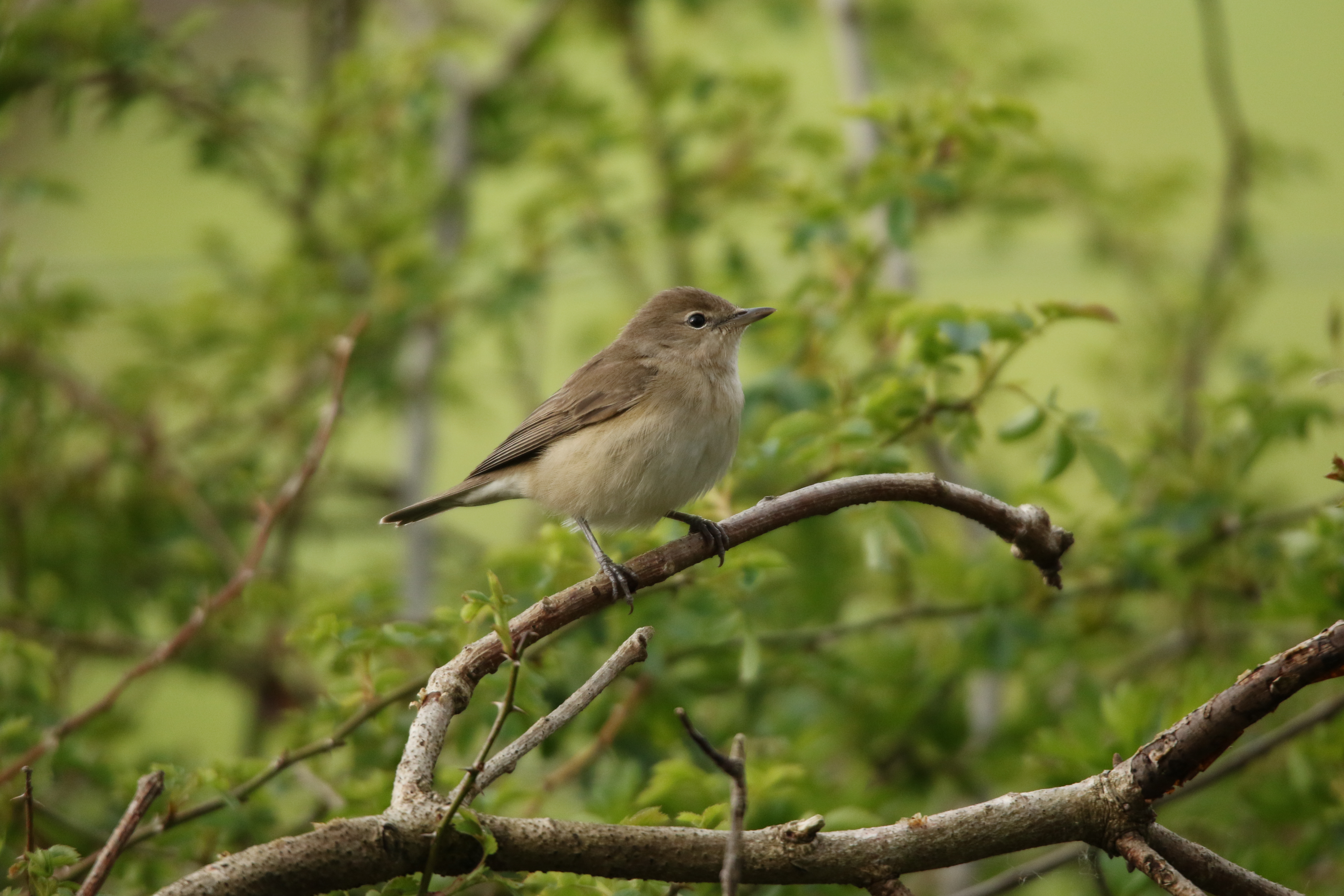Back to Whisby a couple of days later and the first Garden Warblers had put in an appearance with the first Whitethroat also being seen. Willow Warblers had arrived in good numbers the males doing their little parachute flights whilst singing on the wing. At a local pit nine pairs of Great Crested Grebes were in various stages of their courtship rituals.
News of a fairly local Ring Ouzel the evening before had sent my ears twitching as I set off in hot pursuit the following morning of the (29th ) sadly yet again this proved to be my spring bogey bird, it had gone overnight. So via Marton I found myself back at Boultham Mere ( LWT) where the showstoppers were Kingfisher, Cettis Warbler, Skylark and Linnets.
Going just out of county into Nottinghamshire took me to the jewel in the crown of the RSPB midlands region, Langford Lowfields. This site when finally recovered from Tarmac will become the largest reedbed in the whole of the East Midlands. A great start to the day was a Tawny Owl being mobbed by a couple of blackbirds. Other raptors followed with a Peregrine, Sparrowhawk, Kestrel, Marsh Harrier and Buzzard also seen. Langford was true to form with nine species of warbler being seen and heard, usually it is ten but sadly no Grasshopper Warblers had arrived as of yet. A rather curious noise emanating from a clump of brambles proved to be fox cubs at playtime, with wonderful views of these much maligned creatures. A bird reported a few days earlier was still around, a Slavonian Grebe in full summer plumage, a real treat for any ornithological eyes.
So into May upon hearing that Nightingales had returned to Whisby an evening visit on the 5th gave such a choral fest with a Nightingale and a Song Thrush vying for the songster superb title, I have to say the Song Thrush just about won.
Going out of county into Robin Hood country, the management of Sherwood Forest has now been taken on by the RSPB. There is the ancient Oak woodland with many trees over 400 years of age, it is unique in Great Britain. This in conjunction with Budby common gives a vast area with a variety of habitats. Sadly on this occasion I couldn’t find any Redstarts but Tree Pipits, Woodlarks, Green woodpeckers, and a solitary Whinchat more than made up for it. A detour back to Langford for a bit of photography gave great views and pictures of the iconic reedbed hunter (Falco Subbuteo) the Hobby with up to 13 in the air at one time. Reedbeds have a fascination for them as they arrive back from their African wintering grounds on this particular day they were gorging on St Marks flies. Hearing a commotion and the gulls taking flight I swivelled round to see a Bittern in flight, tracking it with the camera it was pleasing to see that the settings were OK and some delicious flight shots were taken.
One site which hasn’t had a mention so far is the Jewel in Lincolnshire’s crown the wader and waterfowl mecca known as RSPB Frampton. So with migration in full swing Sunday 16th May saw a visit to this ever improving site. It was really a bit of reconnaissance as a field trip for guests was getting ever closer. The central roadway was alive with competing Reed and Sedge Warblers eager to get their song as far down the dyke as possible. With Short Eared Owls breeding out on the saltmarsh, probably with very hungry chicks to feed, the adults were often seen quartering for food. The same probably applied to a distant Barn Owl with food in its talons heading inland. The early breeders on the wet grassland such as Lapwing and Redshank already had broods to protect and were certainly letting you know they were both proud and protective parents. A bevy of beautiful waders all in their breeding finery were on show for all to see – Curlew Sandpipers, Little Stint, Dunlin, Golden Plover, Black Tailed Godwit, Greenshank, Whimbrel and three Temminck’s Stints. A cluster of Spoonbills and a few Little Gulls some in breeding plumage made for a brilliant day.
With restrictions now starting to be relaxed mid May saw a foray out of county and into Norfolk, which had been my home for four years in the late eighties. An early start saw a rendezvous with my lifelong mate Aidan at Sculthorpe Moor near Fakenham. All the usual woodland species were seen Treecreeper, Nuthatch and a varied selection of tits. With a Marsh Harrier and a Red Kite arising from their overnight roosts to seek out their first meals of their day. Brief views of flyby bird bling in the form of a Kingfisher followed. On the mammal front several Muntjac, (always a common species here) a couple of Roe Deer, many Brown Hares out on the adjoining fields and a very fortunate view of an Otter albeit at distance as it navigated its way down the upper reaches of the idyllic river Wensum. What would the rest of the day bring after a rather sumptuous cooked breakfast in Holt. Kelling Heath with a bit of local information brought great views of Dartford Warbler before it dived into the thick Gorse cover, also an abundance of Warblers at this site with one particularly vocal Lesser Whitethroat.
Journeying westwards with the ultimate destination of Titchwell at the end of the day, we dropped into a few differing sites, with a wet grassland area close to Wells bringing a blue headed Yellow Wagtail and a selection of waders. But probably it was an extreme mid-air dogfight between a Buzzard and a male Marsh Harrier that stole the show. It was a great example of kleptoparasitism as the former was trying to steal a prey item in the form of a bunny from the latter. A great spectacle to watch with photographs obtained to provide evidence. The day concluded at Titchwell, again with a great selection of waders with some rather dandy summer plumaged Turnstones stealing the show. We retreated to a local hostelry, ordered a meal and sat and watched the Imps beat Sunderland 2-0 in the first leg of the league 1 play off semi final with 91 species under our belts for the day all seen at a rather leisurely pace.
Back into Lincolnshire an evening spent doing a local personal survey revealed a couple of summer purrers ( not cats but Turtle Doves) with one very visible in a large Ash tree just outside the village. Checking the local Sand Martin colony well over 70 nest holes were active, with Mediterranean Gulls back on territory it will be some time before breeding has been confirmed.
Welbeck Raptor Watchpoint is a great social birdwatching location so in early June in the company of over 40 fellow raptor enthusiasts scanning the skies became the order of the day. Buzzards, Red Kites, Hobbies, Sparrowhawk, Goshawks ( in the spring ) but at this time of the year the holy grail of this site Honey Buzzards with their wing clapping displays. It certainly is a great spot to brush up on your Buteo species. The day was rounded off with a diversion to see and hear the long staying Great Reed Warbler at Besthorpe nature reserve. What a bird, but what a voice, ounce for ounce they would give a Wren a run for their money, sadly this bird having overshot its migration destination was singing its song in vain as it was destined never to find a mate in north Nottinghamshire.
Finally with the green light being given to meet up in small groups there was the opportunity to get back to bird and wildlife guiding for clients. So in the company of a group of ladies on a special birthday celebration at Bempton cliffs it involved a bottle of champagne, think it was to toast the birthday not the Gannets. Bempton delivered as per usual all in good weather, even the Peregrines put in an appearance. Another guiding day saw a group come up from Market Harborough to Frampton another great day, three species of Grebe and a plethora of other species no champagne on this event but a tastes of Lincolnshire picnic seemed to be well appreciated.
As this article gets completed and Albert Ross has been seen and photographed at Bempton, a long holiday on the west coast of Scotland and the isle of Barra and further field trips for guests have been undertaken. We are nowhere near that feeling of total freedom, one feels we still have to be very careful but nature and the environment is becoming a bigger part of our lives. Lets just hope our leaders realise this at the forthcoming COP26 conference as we are getting ever closer to that tipping point for this fragile planet that we all share.
